How to Make Coffee Using Coffee Beans: A Beginner’s Guide
Making coffee at home using coffee beans is a great way to enjoy a fresh and flavorful cup of tasty coffee. Whether you fancy a robust, steaming mug or a freshly ground coffee in the morning, employing whole beans provides you with the flexibility to fine-tune the strength and flavor of your beverage. In this article, Aspect Coffee Works will outline step-by-step instructions on how to make coffee using coffee beans.
The first step in this process is to choose the best coffee beans to brew coffee beans without a grinder. When drinking coffee usually in the morning, look for high-quality beans that are fresh and have been roasted recently. Next, you will need to grind beans to the desired consistency. The size of the grind will depend on the method you plan to use. For instance, a coarse grind is perfect for those who use a coffee press machine, while those using an espresso machine would require a fine grind. Once the beans are ground, you are ready to brew your coffee and make your coffee experience truly exceptional.
Contents
- 1 Understanding Freshly Roasted, Whole Bean Coffee
- 2 Preparing for the Brew
- 3 Brewing Coffee Techniques
- 4 Serving the Coffee
- 5 Cleaning and Maintenance
- 6 Will There Be Small Coffee Grounds In Coffee?
- 7 How To Brew Great Coffee Without a Coffee Maker?
- 8 Difference Between Turkish and French Press Coffee
- 9 Conclusion
Understanding Freshly Roasted, Whole Bean Coffee
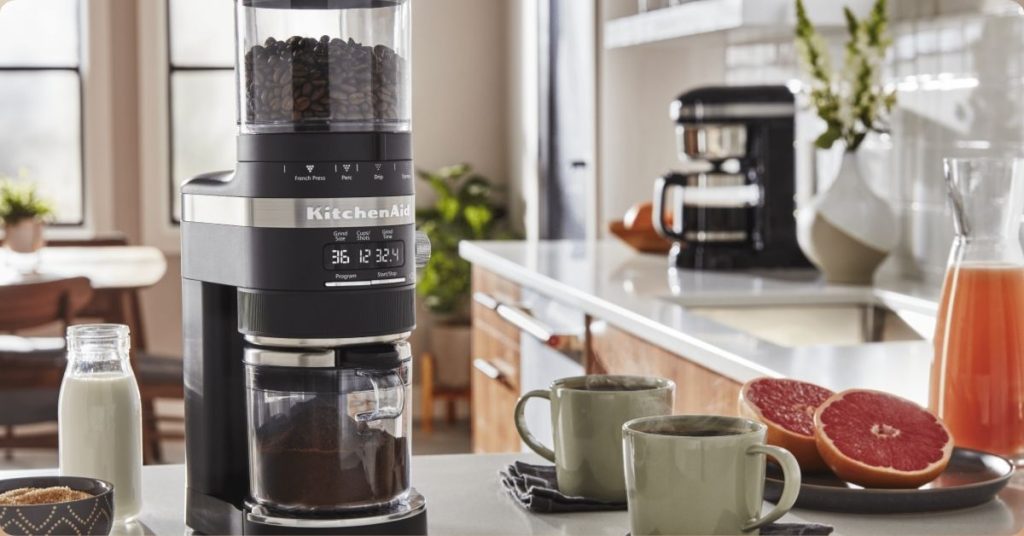
I always prefer to use freshly roasted, whole-bean coffee to brew my favorite beverage. In this section, I will explain what makes drinking coffee special and how to select quality beans.
Types of Coffee Beans
There are two main types of beans to consider: Arabica and Robusta. Arabica beans are known for their delicate and complex flavors, while Robusta beans are more bitter and contain more caffeine. Most specialty coffee shops always use Arabica beans, but Robusta beans are often used in commercial blends.
In addition to the type of bean, how it was ground, and the region where the coffee is grown can also affect its flavor. For example, coffee from Ethiopia is known for its fruity and floral notes, while coffee from Colombia is known for its nutty and chocolatey flavors.
Selecting Quality Beans
When selecting whole coffee beans, there are a few things to keep in mind to ensure you get the best flavor:
- Look for beans that have been roasted within the last two weeks. Freshly roasted coffee beans have more flavor and aroma than older beans.
- Buy beans that are labeled as “single origin” or “estate grown.” These beans come from a specific region or farm and tend to have more distinct flavors than blends.
- Check the roast date and roast level. Lighter roasts have more acidity and fruitiness, while darker roasts have more bitterness and smokiness. Choose a roast level that suits your taste preferences.
- Smell the beans. High-quality beans will have a strong, pleasant aroma.
By selecting high-quality, freshly roasted coffee and storing it in airtight coffee bags away from light and heat, you can ensure that your cup is full of flavor and aroma, providing a truly exceptional coffee experience.
Preparing for the Brew

Before we can start this method, we need to prepare a few things. Here are some important things to consider:
Grinding the Beans
The first step in preparing for the brew is to grind the coffee beans. The size will depend on the method you plan to use. For example, if you plan to use a press machine, you’ll want a coarse grind. If you plan to use a drip machine, you’ll want a medium grind. And if you plan to use an espresso machine, you’ll want a fine grind.
It’s crucial to perform this step just before brewing to ensure maximum freshness and flavor. If done too far in advance, the beans may lose some of their flavor and aroma.
Use the Right Amount of Ground Coffee
Another important factor to consider when preparing for the brew is the amount of coffee you’ll need. The general rule of thumb is to use 1 to 2 tablespoons per 6 ounces of water. However, this can vary depending on your personal taste preferences and the strength you prefer.
It’s also important to measure the grounds carefully to ensure consistent results. Using too much can result in a bitter taste while using too little can result in a weak and watery brew.
By following these simple steps, you can ensure that you’re well-prepared to brew a delicious coffee and keep the coffee experience enjoyable.
Brewing Coffee Techniques

When it comes to brewing using beans, there are several techniques you can choose from. Each method has its unique taste and aroma, and the brewing process can be as simple or as complex as you want it to be. Here are three popular techniques:
French Press Method
The French method is a classic way to brew a rich and flavorful cup of coffee. It involves steeping coarse beans in hot water and then pressing them down with a plunger. To make coffee using a French press method, follow these steps:
- Heat water to just below boiling point.
- Grind beans coarsely and add them to the press machine.
- Pour the hot water over the grounds and stir.
- Let the steep for 4-5 minutes.
- Press the plunger down slowly to separate the ground from the liquid.
- Pour the resulting brew into your cup and enjoy.
Pour Over Method
The pour-over method is another popular way to brew coffee. It involves pouring hot water over grounds that are held in a filter. The water then drips through the filter, extracting the rich flavor and enticing aroma. To make pour-over coffee, follow these steps:
- Heat water to just below boiling point.
- Place a coffee filter in the pour-over dripper and rinse it with hot water.
- Grind beans to a medium-fine consistency, ensuring you’re using the right grind size, and add them to the filter.
- Pour a small amount of hot water over the grounds and let it bloom for about 30 seconds.
- Slowly pour the rest of the hot water over, making sure to saturate all the grounds.
- Let the drip through the filter into your cup.
- Enjoy your freshly brewed cup.
How to Make Coffee Using Coffee Beans for Sure Success
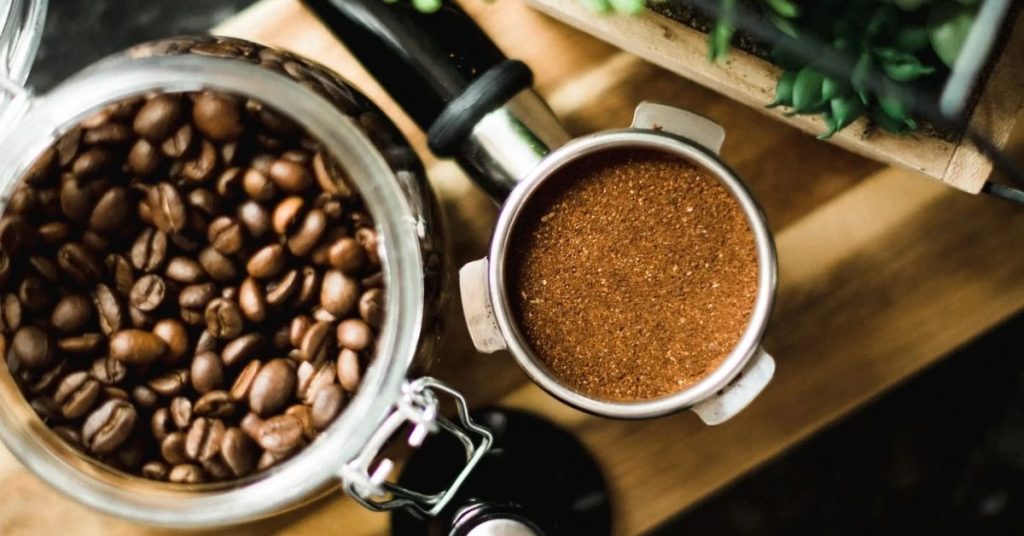
If you don’t have time to brew with the above methods, you can make it from beans. Here’s how:
- Grind beans to a fine consistency.
- Spread the grounds on a baking sheet and bake in the oven at 200°F for 30 minutes.
- Let the grounds cool down and then grind them again to a fine powder.
- Mix one tablespoon of the coffee powder with hot water and stir.
- Add sugar and milk as desired.
- Enjoy your cup of tasting coffee.
These are just a few of the many ways to brew using beans. Experiment with different brewing techniques and find the one that works best for you.
Serving the Coffee
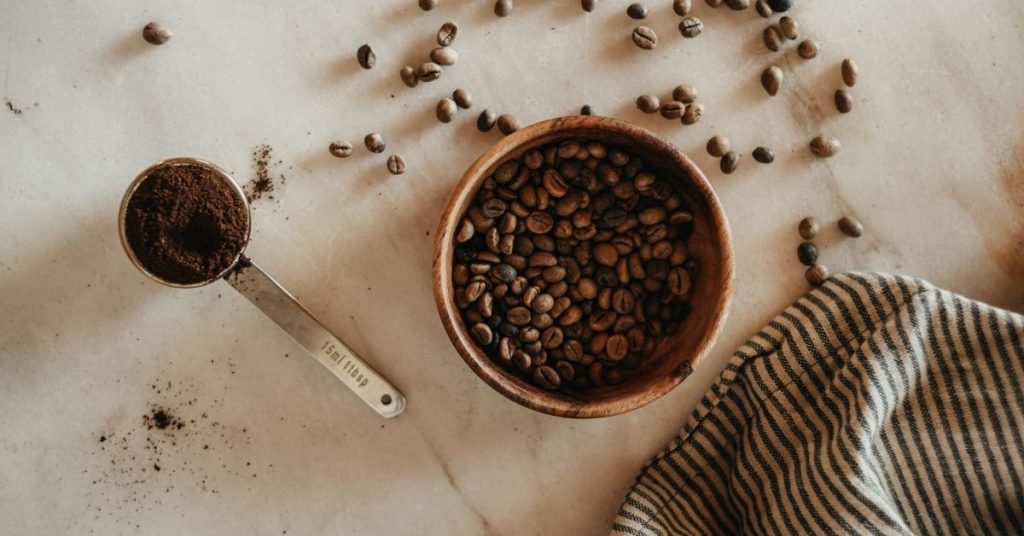
After brewing, it’s time to serve it. Here are some tips to enhance the coffee’s flavor and ensure it’s served at the ideal temperature.
Ideal Serving Temperature
The ideal serving temperature is between 155°F and 175°F. Using a thermometer to measure the water temperature before brewing and serving allows you to control the process and achieve the desired results. If it’s too hot, it can burn your tongue and mask the flavor. If it’s too cold, the flavor can be muted and the beverage can taste stale.
To ensure it is served at the ideal temperature, I recommend using a thermometer to measure the temperature before serving. If it’s too hot, let it cool for a few minutes before serving. If it’s too cold, you can reheat it in a microwave or on the stove.
Enhancing the Flavor
To enhance the flavor of the cup, consider adding some ingredients. Here are some popular options:
- Milk or cream: Adding milk or cream can give the coffee a creamy texture and mellow out any bitterness. You can use dairy or non-dairy options like almond milk or oat milk.
- Sugar or sweetener: Adding sugar or sweetener can balance out any bitterness and add sweetness to the coffee. You can use white sugar, brown sugar, or alternative sweeteners like honey or maple syrup.
- Spices: Adding spices like cinnamon or nutmeg can give it a warm, cozy flavor. You can sprinkle the spices on top of the coffee or add them to the grounds before brewing.
Experiment with different ingredients to find your favorite combination. Just remember to add them in moderation so they don’t overpower the flavor of your cup.
By following these tips, you can serve a delicious cup that’s the perfect temperature and has a flavor that’s tailored to your taste buds.
Cleaning and Maintenance

I know that keeping my equipment clean and my beans fresh is essential for making a perfect cup of coffee. In this section, I will share my tips on how to clean and maintain your coffee equipment and beans.
Cleaning the Equipment
Cleaning your coffee equipment regularly will help the coffee taste great every time. Here are some tips for cleaning your equipment:
- Clean your maker after every use. Empty the carafe, rinse the filter, and wipe down the exterior of the machine.
- Describe your maker once a month. This will remove any mineral buildup that can affect the taste of your coffee. Follow the manufacturer’s instructions for descaling.
- Clean your coffee grinder after every use. Wipe down the exterior and remove any leftover ground. Take apart the grinder and clean the burrs with a brush.
- Clean your press machine after every use. Disassemble the plunger and wash the parts with soap and water.
Storing Coffee Beans
Storing your coffee beans properly will help them stay fresh and flavorful for longer. Here are some tips for storing your beans:
- Store your beans in an airtight container. Oxygen is the enemy of fresh coffee, so it’s important to keep your beans in a container that seals tightly.
- Keep your beans away from light and heat. Exposure to light and heat can cause your beans to go stale more quickly. Store your beans in a cool, dark place, like a pantry or cupboard.
- Don’t store your beans in the fridge or freezer. While it might seem like a good idea to store your beans in the fridge or freezer to keep them fresh, this can actually cause them to absorb odors from other foods in your fridge or freezer.
By following these tips for cleaning and maintaining your coffee equipment and beans, you’ll be able to enjoy a delicious cup of coffee every time.
Will There Be Small Coffee Grounds In Coffee?

When brewing with beans, it is common to find small grounds in the final cup. This is because grounds can escape through the filter and make their way into the coffee. However, this is not a major issue and can be easily resolved.
One way to minimize the amount of small coffee grounds in your cup is to use a high-quality grinder. A burr grinder is a great option as it grinds the beans consistently, resulting in fewer small particles. Additionally, using a paper filter or a metal filter with a fine mesh can help to trap the gritty coffee grounds and prevent them from entering the final cup.
If you still notice small grounds in your coffee, you can use a simple trick to remove them. Pour your brewed coffee through a fine mesh sieve or a filter to catch any remaining grounds. This will result in a smoother and cleaner cup.
How To Brew Great Coffee Without a Coffee Maker?
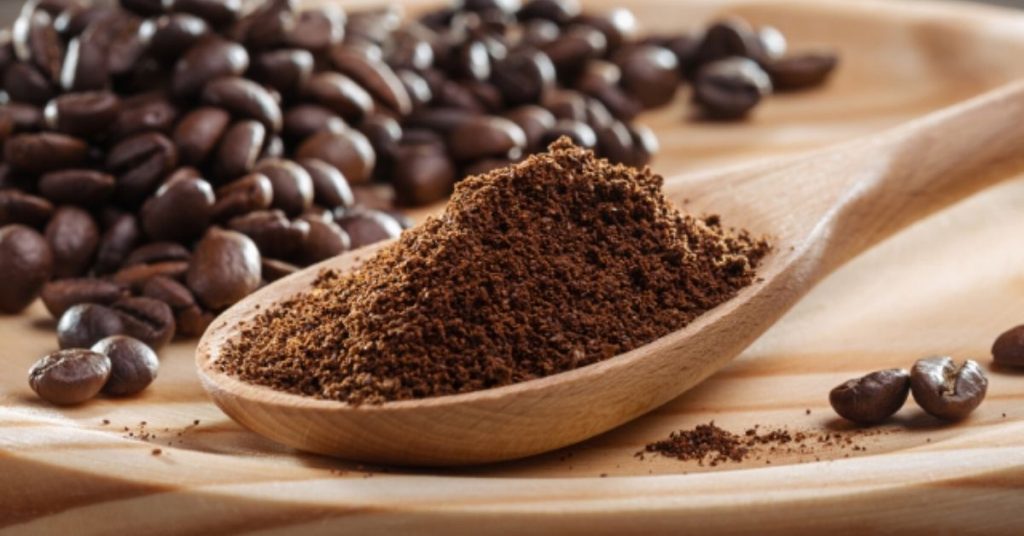
As a coffee lover, I know that nothing beats the aroma and taste of freshly brewed coffee. But what if you don’t have a maker at home? Don’t worry, you can still enjoy a delicious cup with just a few simple steps.
Step 1: Grind Your Coffee Beans
The first step to making coffee without a maker is to grind your beans. You can use a manual grinder or an electric one. For a standard cup, you will need about 1 tablespoon of beans. However, you can adjust the amount according to your taste.
Step 2: Boil Water
The second step is to boil water. You can use a kettle or a pot to boil water. Once the water is boiled, let it cool for a few seconds before pouring it over the grounds. This will help to prevent the coffee from tasting bitter.
Step 3: Pour Water Over The Grounds
The third step is to pour the water over the grounds. You can use a filter or a cheesecloth to strain. Make sure to pour the water slowly and evenly over the grounds to ensure that all the grounds are evenly saturated.
Step 4: Let It Steep
The fourth step is to let the coffee steep for about 4 minutes. This will allow the coffee to extract all the flavors and aromas from the grounds.
Step 5: Enjoy Your Coffee
The final step is to enjoy your cup. You can add milk, cream, or sugar according to your taste. You can also experiment with different types of beans to find your favorite flavor.
Making great coffee without a maker is easy and simple. With just a few simple steps, you can enjoy a delicious cup anytime, anywhere.
Difference Between Turkish and French Press Coffee
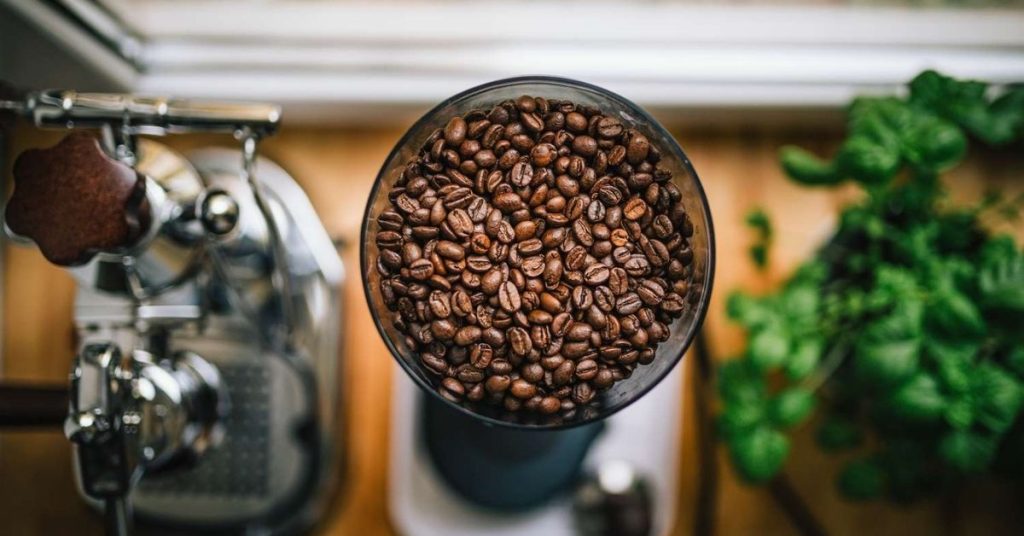
When it comes to coffee, there are many different methods to choose from. Two popular methods are Turkish and French press coffee. While both methods produce a delicious cup, there are some key differences between them.
Brewing Method
Turkish coffee is brewed using a small pot called a cezve. The coffee is ground very finely and added to the pot with water. The mixture is heated on a stove until it starts to froth. The coffee is then poured into small cups, including the grounds.
On the other hand, French coffee is brewed using a glass or stainless steel pot with a plunger and a metal filter. The coffee is coarsely ground and added to the pot with hot water. After a few minutes, the plunger is pushed down, separating the grounds from the coffee.
Flavor and Texture
Turkish coffee is known for its strong, bold flavor and thick, sludgy texture. The distinct taste arises from the fine grind and the decision not to filter out the grounds. The texture is thick and sludgy due to the high concentration of ground.
In contrast, French coffee has a smoother, more balanced flavor and a lighter texture. The taste originates from a coarser grind and the metal filter, allowing some oils and flavors to pass through while effectively filtering most of the grounds.
Both Turkish and French methods have their unique characteristics and flavors. The method and grind size are the main factors that differentiate the two. Whether you prefer a strong, bold, or smoother, more balanced cup, there’s a method out there that’s perfect for you.
Conclusion
This method is not as complicated as it may seem. With a few simple steps, you can enjoy an amazing coffee cup that is rich in flavor and aroma, making it the perfect choice for your morning cup.
Firstly, it is essential to choose high-quality beans that are fresh and have been roasted recently. You can purchase beans from a local shop or online. It is best to store the beans in an airtight container away from direct sunlight to maintain their freshness.
Next, process the beans to the desired consistency using a grinder. The size of the grounds will depend on the method you are using. For example, a coarse grind is suitable for a press machine, while a fine grind is ideal for espresso.
After grinding, it’s time to brew. There are many coffee brewing methods to choose from, including drip coffee, pour-over, and espresso. Each method has its unique flavor profile and brewing time, so choose the one that best suits your taste. Once the brewing process is complete, pour your coffee into your favorite mug and savor the delightful flavors.
Finally, add any additional ingredients such as milk, sugar, or cream to your coffee to enhance the flavor further. Experiment with different flavors and methods until you find the perfect cup that suits your taste.







